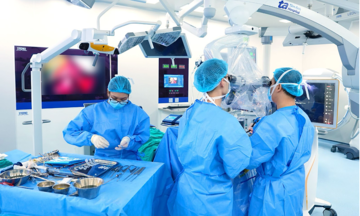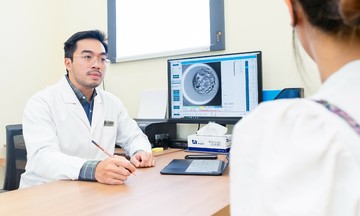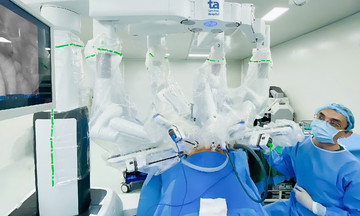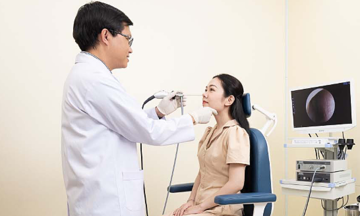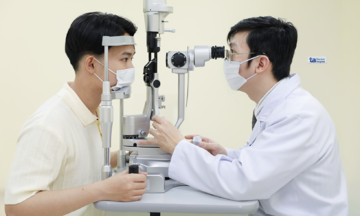"If the patient had sought medical attention from the beginning, early intervention with a stent could have been possible," said Dr. Ngo Quang Hai, former Deputy Director of the Vietnam Acupuncture High-Tech Center at the Central Acupuncture Hospital, on 19/8.
The man had a history of smoking and hypertension, two leading risk factors for heart disease. He had recently experienced limb weakness and blurred vision for several seconds, attributing it to work stress. When chest pain began, he assumed it was indigestion. His blood pressure reading was normal, so he took antacids. When his symptoms persisted, he used an at-home testing service and sent the results to a friend who is a doctor.
His friend, seeing high cholesterol and elevated liver enzymes but normal blood sugar and blood count, prescribed medication for the liver enzymes and vitamins. Several days later, the man suffered a critical heart attack. "A completely inaccurate diagnosis led the patient to miss a golden opportunity for timely treatment," Dr. Hai said. "This case is very unfortunate."
Associate Professor Dr. Nguyen Lan Hieu, Director of Hanoi Medical University Hospital, also shared the case of a woman in her early 20s who twice used an at-home testing service, with results indicating "high cholesterol." After consulting an acquaintance who reviewed the results, she took cholesterol-lowering medication for three months.
When she finally visited the hospital, the doctor pressed for details, and the woman presented test results lacking proper signatures and stamps. She revealed she paid only 150,000 VND for the comprehensive test – a price no hospital in Vietnam could match. Associate Professor Hieu ordered new tests, which revealed she didn't need any cholesterol medication and didn't have high cholesterol.
Public hospitals are overcrowded, and patients face long wait times. Many doctors, pressured by time constraints, conduct hasty examinations and exhibit poor attitudes. In this context, "at-home testing" services promising "speed, convenience, and affordability" become attractive. Many services advertise home blood collection and results within hours for 100,000-300,000 VND.
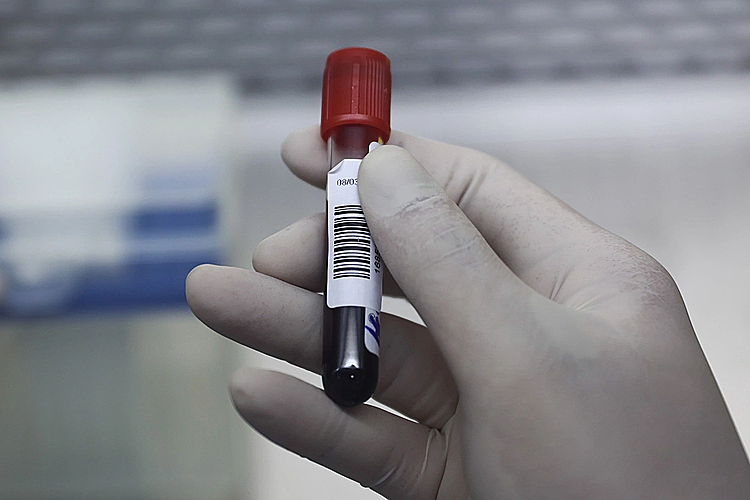 |
Medical staff take a blood sample from a patient for testing. Photo: Quynh Tran |
Medical staff take a blood sample from a patient for testing. Photo: Quynh Tran
Seeking speed, convenience, and low cost, many opt for at-home tests or private clinics instead of consulting doctors. Many, especially those with some pharmaceutical knowledge, self-test, self-diagnose, self-prescribe, and self-medicate without professional guidance. They often consult multiple sources, undergo additional tests, and "try" various medications, even adjusting dosages to monitor effects.
According to Dr. Hai, self-testing outside the formal healthcare system poses several risks. First is the reliability of the results. Internationally, reliable tests require licensed facilities, trained personnel, and regularly calibrated equipment.
However, many at-home testing services operate in a legal gray area. "Patients should carefully examine result sheets and be wary of those lacking logos, clear addresses, and signatures with the name and title of the responsible doctor," Dr. Hai advises.
More dangerous is the misinterpretation of results. In traditional medicine, the principle of "no observation, no hearing, no questioning, no pulse-taking, no doctoring" emphasizes the importance of in-person examinations.
The case of a 32-year-old woman with prolonged menstrual bleeding illustrates this. After a phone consultation with a "familiar practitioner," she was advised to take Leonurus Japonicus extract continuously. Initially, her symptoms improved, but after several months, she became thin, pale, anxious, and dizzy.
At an oriental medicine clinic, the doctor diagnosed Qi and blood deficiency, explaining that while the extract promotes blood circulation, it depletes Qi, leading to further weakness with prolonged use. This case shows that even the "right medicine" can be harmful if used incorrectly.
Misdiagnosis and delayed treatment not only threaten lives but also create a significant economic burden. According to Social Security data, treating late-stage cardiovascular diseases costs 5 to 10 times more than early intervention. For example, placing a stent at the first warning signs costs about 50-80 million VND. Treating complications from an acute heart attack can cost 200-500 million VND, excluding post-treatment care and lost work capacity.
Doctors advise seeking in-person medical attention at the first sign of symptoms. Test results are only one piece of the puzzle. Accurate diagnosis requires combining clinical examination, medical history, imaging, and other factors. Patients can use tests for initial screening, but they are not a substitute for a doctor's visit. Doctors must also refuse to "prescribe favors" without examination, protecting both patients and themselves.
In the long term, the healthcare system needs improved accessibility. Associate Professor Hieu suggests a "family doctor" model: "Patients should choose a long-term doctor, building a trusting relationship. This allows the doctor to understand their health status and provide accurate advice."
Technology can also be a solution. The Ministry of Health has approved pilot programs for some telemedicine applications, allowing patients remote consultations with specialists. However, the prerequisite remains an initial in-person examination for the doctor to assess the patient's overall health.
Health education needs strengthening. According to a World Health Organization survey, countries with higher health literacy rates tend to have significantly lower rates of self-medication errors.
"Tests are just tools; doctors are the ones who synthesize information and bear responsibility," Dr. Hai emphasizes. "Seeking early medical attention can save lives, while delay can be life-threatening; this is an undeniable truth."
Thuy Quynh




